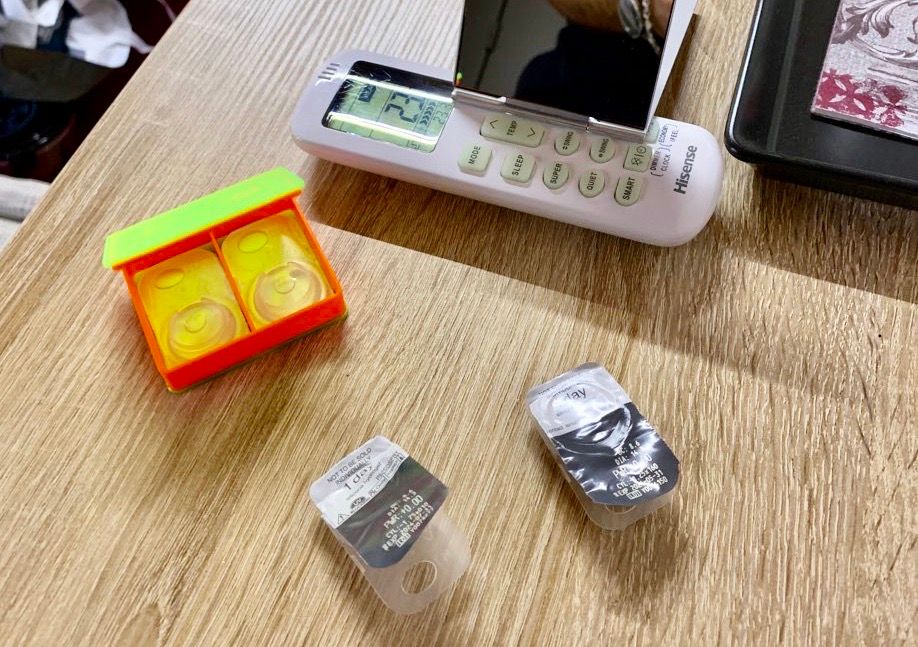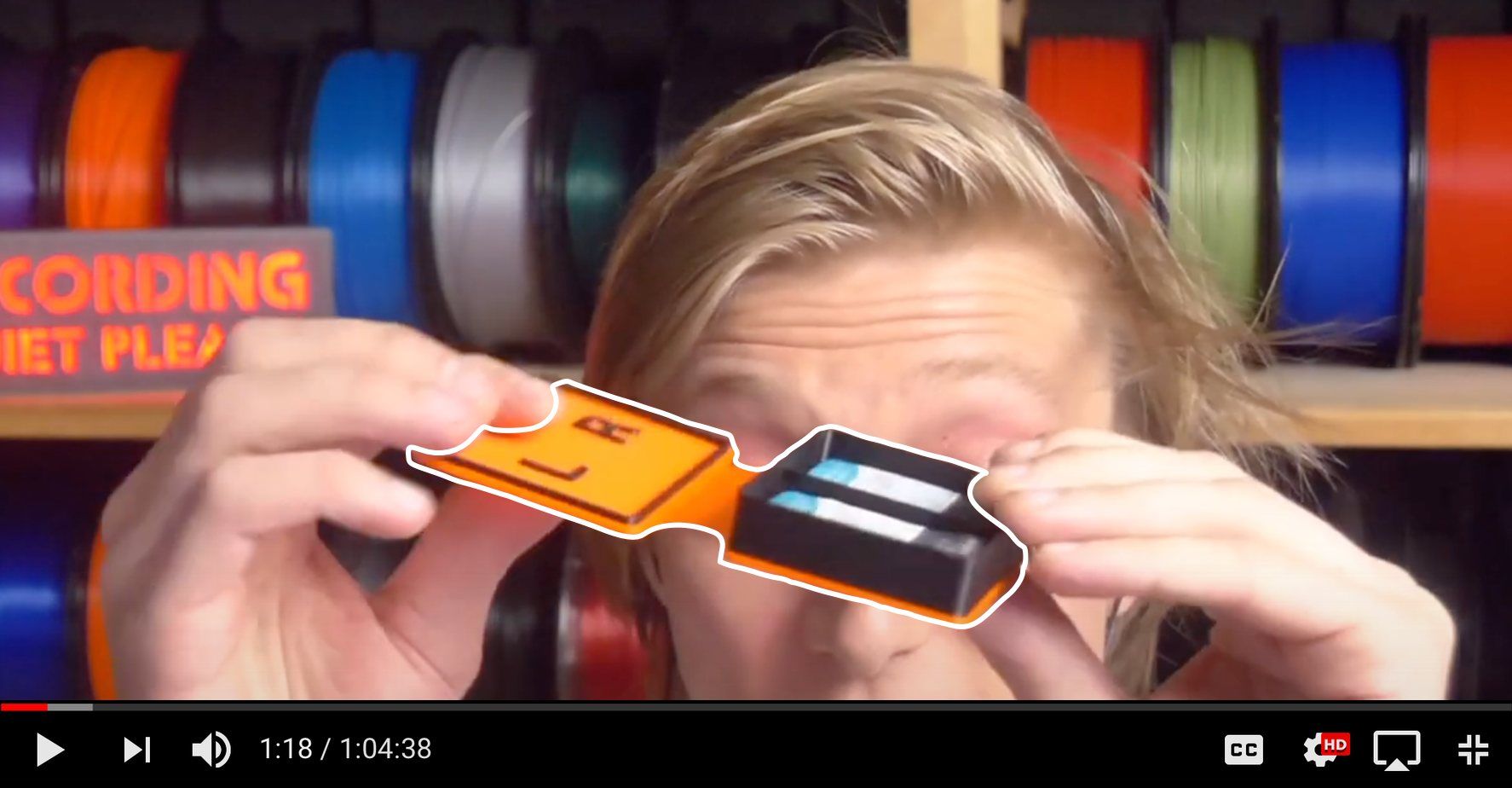Originally I planned to write a completely different story, but one event changed everything about a week ago. If you follow this blog closely, you may have noticed that I mainly use an Original Prusa i3 MK3S for my projects. I like the Prusa Printers company: besides engineering high quality open-source 3D printers, they are also pretty much engaged with the community around them. During the COVID19 times, Prusa were fast in developing a new way of working to protect their employees. They were also a highlight at the widespread practice of printing protective shields for medical workers. At the same time, Prusa representatives stopped going to events around the world, which resulted in some drop in communication and showcases of their new products.
One week ago, Prusa 3D hosted a live stream where key persons talked about the latest news. I tuned in to that stream without much motivation: I was tired and still had to finish some work-related stuff. And then, one minute into the stream, Mikoláš Zuza (the guy behind most of Prusa videos) shows a contact lens case that I designed (remixed to be precise) and talks about how helpful it is.
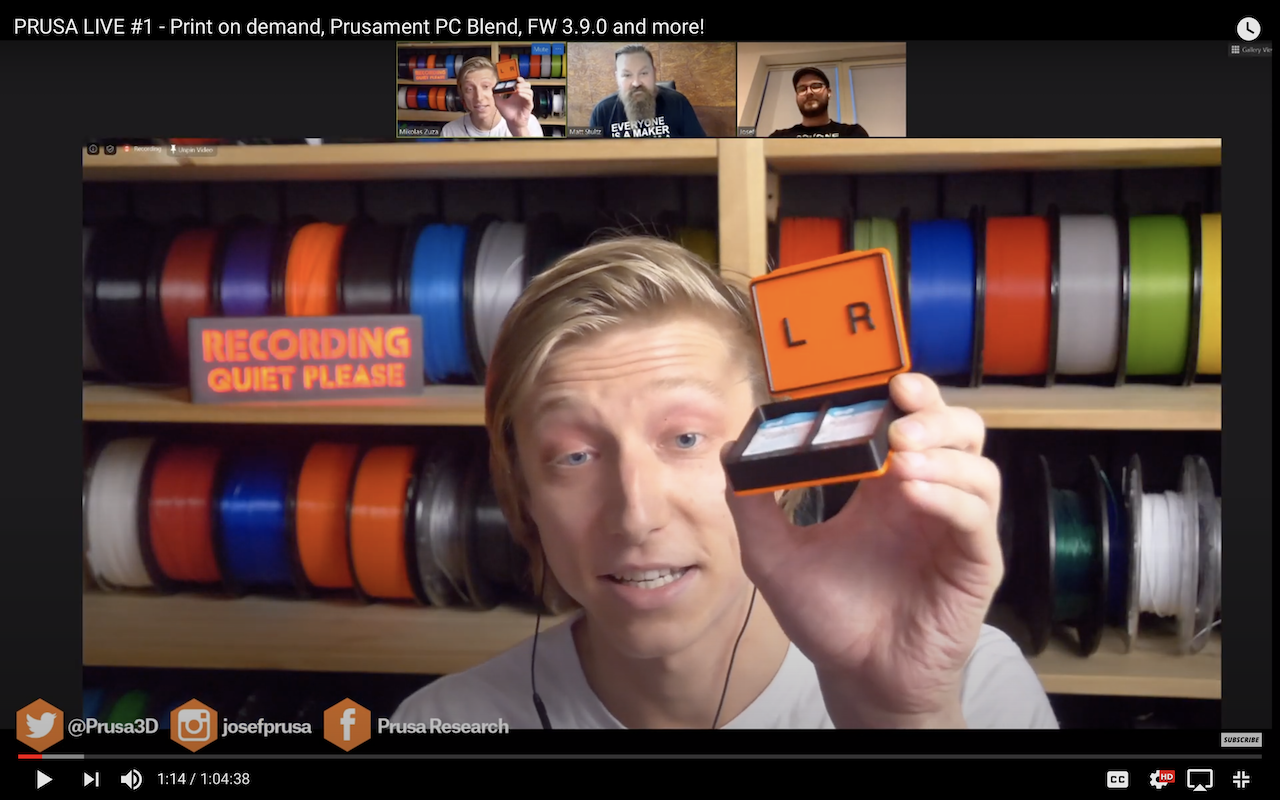
This was one of those awesome feelings that I experienced in my life. I was especially surprised because I designed the case only with my own needs in mind, but then decided to share it with other people because "why not?" In the rest of this blog post, I will tell a short story about how the case. And if you want to watch the whole stream, it's available here:
Sight Correction
The fact that I have a poor sight came to me as a surprise when I was doing a regular sight check required for a driving exam. I never had perfect sight, but the test that checkups that I did two years earlier showed that my sight is about 80%. Now it's around 40% because of astigmatism. Essentially, my eyes are not perfectly round, so light does not focus on a point at my retina but rather in a segment. That's why everything that I see is slightly blurred. Each eye is deformed in a slightly different way; that's why they blur what I see under different angles. A human brain is an outstanding machine: it can take two distorted images (that come from the eyes) and create a refined version better than the two originals. At the same time, the brain works very hard each time I look around, so I had frequent headaches.
I got glasses, proper glasses, expensive glasses. Disclaimer: there are no cheap glasses in Switzerland, only expensive and very expensive ;). Glasses did their job: I could see everything razor–sharp. At the same time, the glasses squished everything that I saw. And even after I got used to the squishing, I had a hard time figuring out what happens on the edge of the glasses. For example, running (on the stairs) was super-complicated. Then during a vacation at my home town in Ukraine and got contact lenses. They are my saviors, I put them on in the morning, and I try not to forget to take them off when I go to sleep. I use monthly lenses because they are cheaper, but I also have some daily lenses "just in case." I keep a couple of pairs in my car, so I can always fix my sight when I have to drive. I keep a couple of pairs in my backpack as a backup if I forget to put on the regular lenses. But hey, it's a good idea to keep the lenses together and distinguish left from right. That's why I needed a case.
Making the Case
First, I searched for available designs, but I couldn't find anything. Then I looked for the available design of parametric cases. And I found a Customizable Case (Rectangular) by walter at Thingiverse. This model is a simple rectangular case with rounded corners. Its lid is attached permanently to the body with a thin, flexible hinge, and stays closed thanks to the friction. So it's a single solid object, and simplicity is priceless.
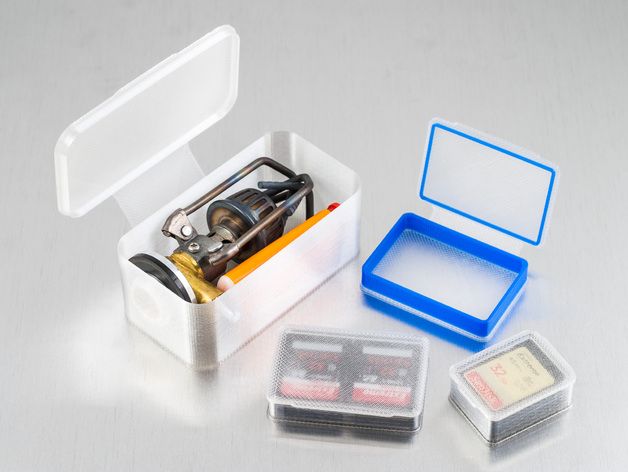
easy to set a correct size to fit four daily contacts (two stacked pairs). I also added a divider in the middle to ensure that the left and right lenses won't mix. I added L and R letters to the lid to make it even more apparent which lens corresponds to which eye. Finally, I spent quite some time fine-tuning the hinge, and the lip that keeps the cover closed thanks to friction.
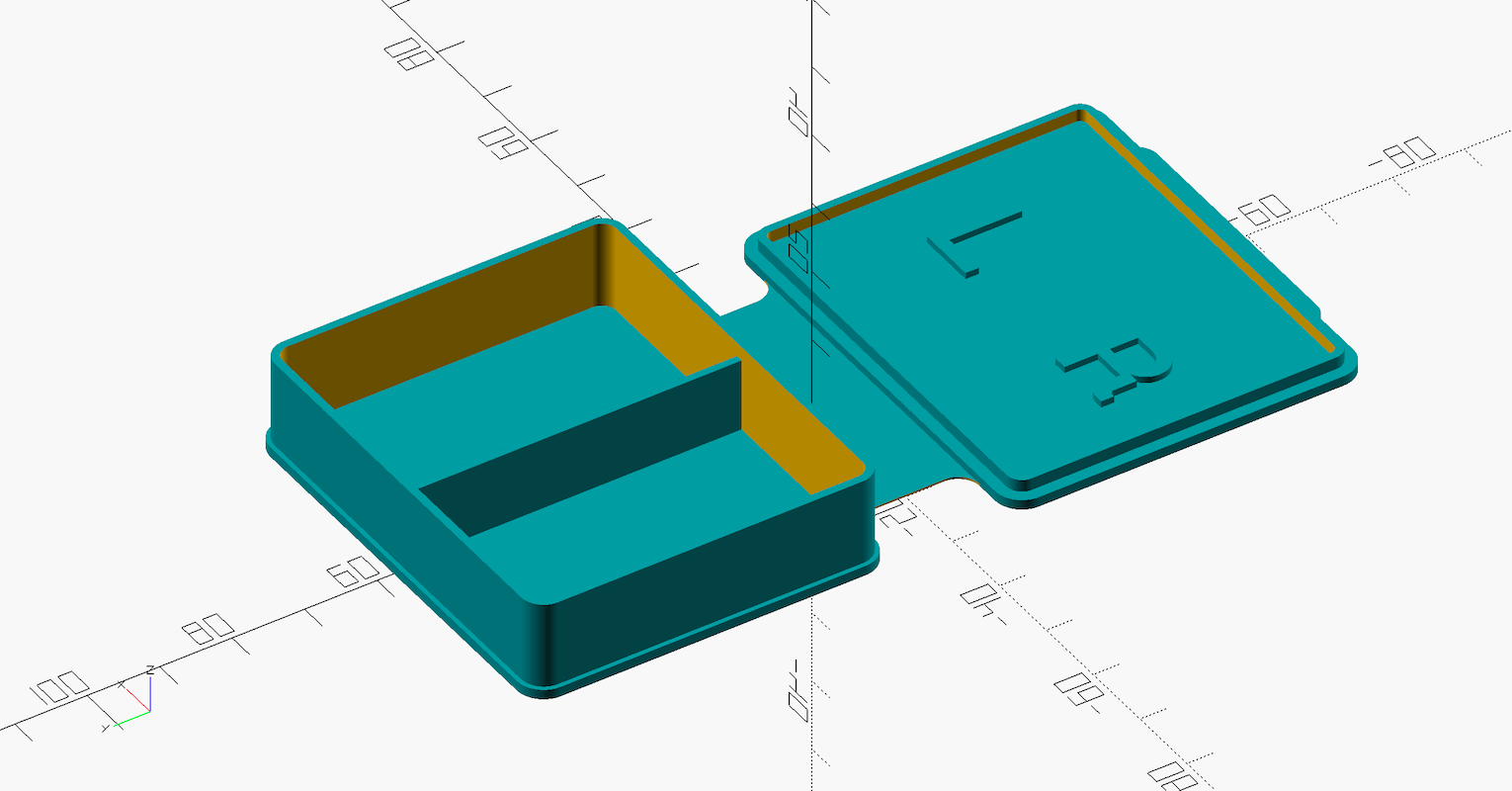
You can also make the letters truly pop by doing a color change at the level of letters while printing. This also results in a nice design with top and bottom in one color and walls (and the letters) in another one.
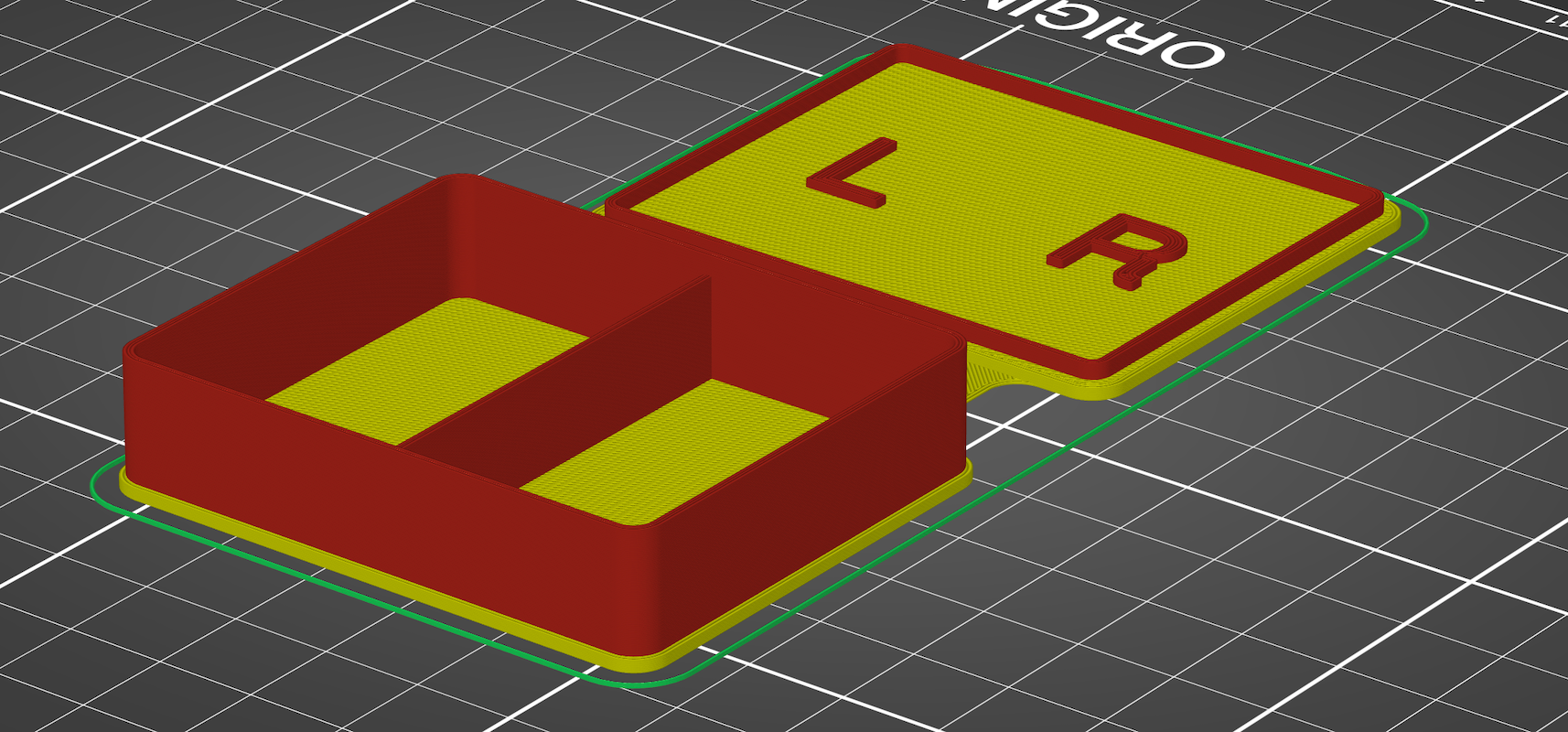
Epilog
That's kind of all that there is to the story. I printed a couple of cases to put in my car and my backpack.
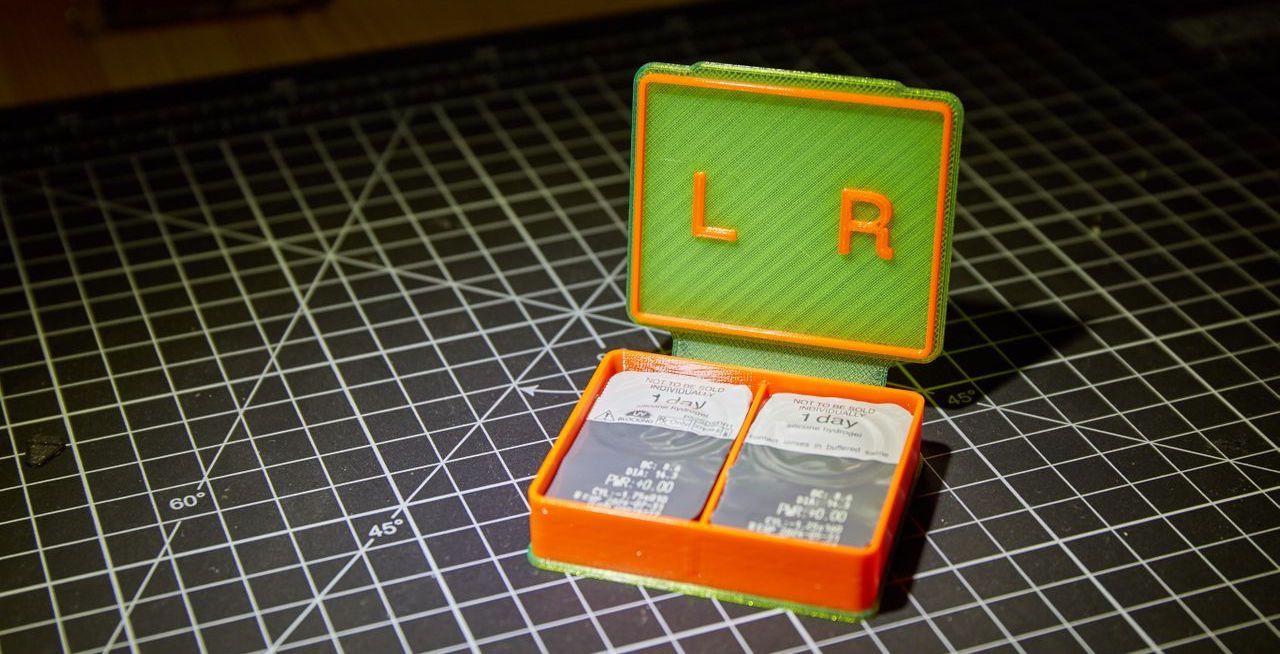
Now when I travel for a couple of days, I put on daily lenses at home and trash them at the end of the day at a hotel. Next morning I will put on other dailies from a case that I printed, and it's always a pleasure to look at it. But it's also another kind of pleasure to know that this case is useful for other people.
